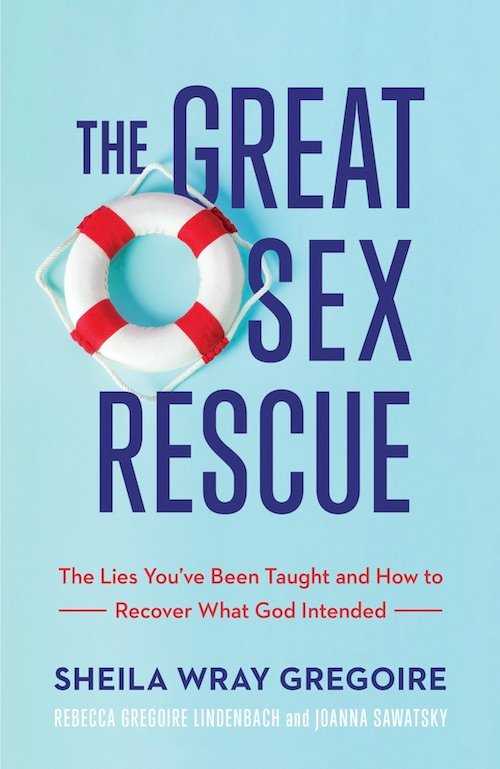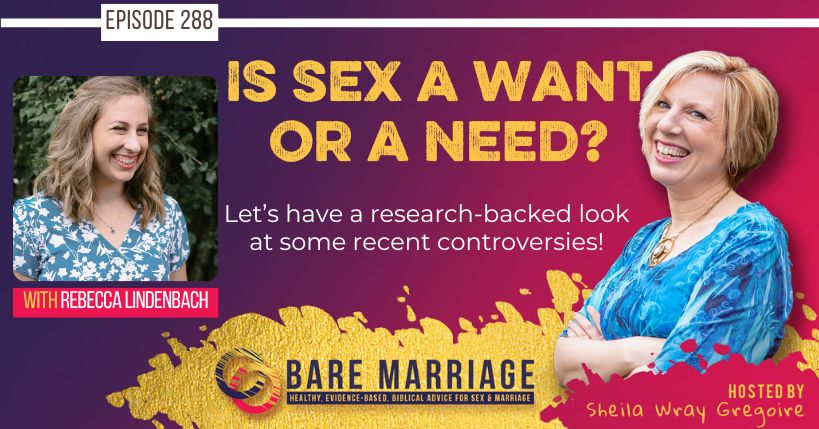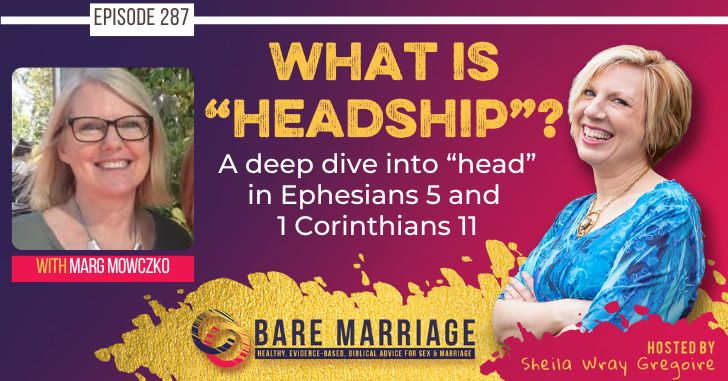Do the 5 Love Languages stand up to scientific scrutiny?
In January of this year, an article was published and was called Popular Psychology Through a Scientific Lens: Evaluating Love Languages From a Relationship Science Perspective in the Psychological Science Journal.
(And two of the authors are from my hometown of Toronto (Canada represent!).)
This month we’re looking closely at several recent studies. We started the month with our podcast on new research, looking at four new studies. And today we’re going to tackle the one on the five love languages!
The 5 Love Languages has been a huge best-seller.
In evangelical circles, and even in the secular world, the book, The Five Love Languages by Gary Chapman has had a HUGE influence on how many couples have learned to relate to one another.
So the authors of this study decided to look into its claims, in terms of the relationship literature that is out there, to see if this actually does stand up to rigorous scientific study.
These three authors of the study looked at three of the assumptions that Chapman made in his book to see how they held up to scientific investigation.
So let’s dive to see what they discovered!
Assumption 1: Each Person Has A Primary Love Language
Gary Chapman names five love languages:
- acts of service
- quality time
- words of affirmation
- physical touch
- gifts
He says each person has a primary love language. But is this true?
“Specifically, the ratings on the Likert-type measures consistently exhibit highly skewed distributions, with most ratings falling above the midpoint of the scale and average ratings hovering around 4 on a 5-point scale for all five love languages.”
For those who are not familiar with the terminology used here, a 5-point Likert scale is when you survey people with a question like, “do you like ice cream?” And your choices are typically: “strongly disagree, disagree, neutral, agree, strongly agree.” When you ask people the six questions for each of the love languages, you end up with almost identical scores on everything.
They also found that your primary love language, as identified by the forced choice measure that they give, is not reliably associated with their scores on the continuous measure. So if you force a person to choose between these things, but then you look at how that actually measures against the continuous measures, they don’t measure up.
“Consequently, studies have shown that a person’s primary love language, as identified by the forced-choice LLPP measure, is not reliably associated with their scores on the continuous measure … such that a person’s forced-choice primary love language does not surface as their highest-rated love language on the continuous measure.”
Assumption 2: There Are Five Love Languages
The second assumption that this study looked at was that there are five love languages. Here’s what the study says,
“In addition to the findings that all five love languages are highly endorsed, studies have found substantial positive correlations among peoples’ ratings of all five love languages. These findings not only contradict the notion that people are restricted to a primary love language, but they also render the fivefold organization of the love languages questionable. Although some studies claim to find support that the five love languages represent somewhat distinct and separable constructs, the results across studies are inconsistent, finding support for a three-factor, and a five-factor structure, all of which significantly deviated from the proposed five-love-languages structure”
They’re saying is that, in essence, all the people who are thinking to themselves, “I really like words of affirmation” are also thinking, “I really like quality time” and are also thinking, “oh, acts of service are also super nice.” And then they’re thinking, “but I also like to have some hugs and cuddles.” AND, “but a good present on my birthday—”. There is not enough differentiation to make the case that these are not all measuring the same thing. Several of the constructs are actually correlated.
The same way that we tend to think that people are either sweet or savory—people either like sweet or savory. No. People just like sweet and savory things. Right?
The authors of this study also talked about how, when other people have tried to create different ways of grouping how we might feel loved in our relationships, some people come up with three, while some people come up with five, and some even came up with seven. But none of them really map onto Chapman’s original five. People have tried to do this using different models, but it just doesn’t line up in the way that Chapman wrote.
The study also has this to say,
“Whereas the love-language measures were developed on the basis of Chapman’s top-down descriptions, a more comprehensive understanding of how people communicate love would require a bottom-up approach. In fact, research on relationship maintenance that has used such an approach, in which people are asked what they do to maintain a satisfactory relationship, identified seven distinct relationship maintenance behaviors, some of which overlap with Chapman’s (assurances are similar to words of affirmation) but others that are not captured in the love languages, such as integrating a partner into one’s broader social network and developing effective strategies to manage conflict.”
So what they’re saying is when they actually look at couples and say, “Hey you’re happy. What do you do to make your relationship happy?”, some of their responses show up on Chapman’s stuff, but others don’t.
However, what Chapman says is, “I got this idea, guys. There’s five love languages. Everyone has one, and that’s how relationships work. And we’re just going to slot everyone into those categories, and then we’re going to call it the marriage book of the century.”
But that’s not the same thing. That’s a top-down approach versus a bottom-up approach. Totally different. And in research, when you’re making assertions about how the world is, you’re supposed to start from a bottom up approach.
Assumption 3: Speaking Each Other’s Love Language
Assumption three is that it’s really important to speak each other’s love language. So what the book teaches is that we need to figure out what our spouse’s love language is, because they primarily experience love through that love language.
“Although there is limited evidence for the presence of primary, or five, love languages, several studies have nevertheless attempted to test Chapman’s (2015) third key assumption that partners who “speak” the same love language report greater relationship quality. One way that researchers have tested this assumption is by investigating whether partners who have the same (vs. a different) primary love language are more satisfied. Yet none of these studies found empirical support that couples in which partners match (vs. mismatch) in their primary love language report higher relationship satisfaction.”
So what Chapman says is, “Look, we tend to express love in the way that we want to receive it. And what you need to do is you need to learn to speak love in the way that your partner wants to receive it.”
Let’s think about this: if this were true, then people who each had the same love language would naturally speak love easier to each other–but they cannot replicate that finding. It doesn’t work. And not just that, when people deliberately try to show love, using any one of the five love languages, the other partner tends to feel just as loved.
When someone deliberately tries to show love and be kind, it doesn’t actually matter as much how you do it. That love will still be felt.
"A groundbreaking look into what true, sacred biblical sexuality is intended to be. A must-read." - Rachael Denhollander
What if you're NOT the problem with your sex life?
What if the messages that you've been taught have messed things up--and what if there's a way to escape these toxic teachings?
It's time for a Great Sex Rescue.
We know this intuitively. On the Bare Marriage Podcast Episode 222, Rebecca shared an amusing story of how her little daughter sometimes shows her love. Often, she’ll walk up to Rebecca and pats her head, echoing a sign of love that Rebecca often gives her in moments when she’s scared. However, because she’s still so little and hasn’t quite figured out how to use those motor skills effectively, with every other pat she is also poking Rebecca in the eye!
But Rebecca still feels loved in those moments because she’s aware that her daughter is making a choice to show her love (even if Rebecca may not choose that as her primary love language!)
Let’s read on to find out what the conclusion was in this study of the five love languages:
“In fact, recent work that employed rigorous analytical methods to test all possible combinations of a person’s preferences and their partner’s expressions revealed that expressions of all love languages were positively associated with relationship satisfaction regardless of a person’s preference, with very little evidence of matching effects (Chopik et al., 2023).”
Gary Chapman is making big claims in his book that can’t be replicated in studies.
What if love language is more like a balanced diet?
The researchers go on to suggest that a loving relationship could look more like a balanced and nutritional diet. That balanced diet is going to have all the love languages in it, as well as the love languages that Chapman doesn’t measure. Now, if you start out with serious deficiencies in something, then you may need more of one particular thing for a while. So if you were just really deprived of physical touch, you may need more physical touch.
People might still have preferences, yes. But what we really need is this balanced diet, and that’s what actually keeps relationships going. It isn’t that you find this one magic thing.
“Whereas Chapman’s (2015) language metaphor implies that people can feel love only when their partner speaks their love language, the healthy-diet metaphor suggests that people need multiple essential nutrients to maintain satisfying relationships. Although people can certainly stay alive if they consume only some ingredients (e.g., carbs), we ultimately need all key nutritional ingredients (e.g., carbs, protein, fat, vitamins, minerals) to be in the best state of health.
Likewise, although people might be able to successfully maintain their relationships even if they are missing a particular ingredient (e.g., lack of physical touch in long-distance relationships), the best relationships will be ones in which partners spend time together (quality time; Aron et al., 2022), express appreciation (words of affirmation; Algoe, 2012), show affection (physical touch; Jakubiak & Feeney, 2019), help and support each other (acts of service; Feeney & Collins, 2015), and make each other feel special (which is presumably the intention behind gifts; Komiya et al., 2019), among other behaviors (e.g., support for personal goals and autonomy) not captured in Chapman’s five love languages.”
But What If The Five Love Languages Worked For My Marriage?
Whenever we start to talk about the issues with the five love languages, people tend to get uncomfortable.
A while ago, I posted a link to this article on the Facebook page so that people could talk about it. I just thought it was interesting that this doesn’t stand up to scrutiny. And a bunch of people were saying, “No. The article is wrong because it worked for us.”
What you’re talking about is one data point. And your one data point is important, but it is only one data point. It’s not more important than anyone else’s data point. And what that means is that when you have a study that incorporates data points from thousands of people, you can’t just say, “that study is wrong because of me.” (We talked about that more in this podcast on the misuse of statistics, specifically about spanking. But the same logic applies).
Here’s what the 5 Love Languages article Isn’t Saying (And What We’re Not Saying!)
It isn’t saying that The Five Love Languages book is harmful or that it’s going to hurt anyone. And that’s not what we’re saying either. What it’s saying is that there isn’t the scientific backing to make the claims that Chapman makes.
But it doesn’t mean that reading the book didn’t help you!
Here’s why it may have helped you even if there’s not a lot of backing for it: Most people have never talked about how to communicate. Most people have not really talked about how they feel connected and how they feel close. In fact, most people can’t even express it to each other. They can’t even say what they need.
And so when you do anything that makes you more intentional about connecting with your spouse, that is going to improve your marriage. I think that is what the benefit of something like The Five Love Languages is. It’s easy to talk about. It’s easy to understand. It’s easy to remind yourself, “hey, you know what? I should pick up a coffee for my wife on my way home from somewhere.” Or, “hey, you know what? I really should spend some time talking to my husband tonight.”
Download Our Marriage Survey
Join 40,00 others and let's change the evangelical conversation about sex
Anything that prompts you to do things that connect with someone is going to be beneficial.
So we’re not saying any of this is harmful. We’re just saying let’s not over-promise. And that’s what the book did: it over-promised.
There was a The Washington Post article where someone actually got a hold of Gary Chapman, and he answered some of their questions such as, “what do you say about why this doesn’t measure up?” And he basically says, “well, it did in my case, and it’s helped a lot of people.” But he understands that it’s just more of a fun tool to get started on, and that really is all it is. It’s not a magic panacea, and the claims that he made– that we have one primary love language, that there is only five, and that you tend to experience love in the way that—or you tend to want to give love in the way that you experience love and that when we do this for our partners that they feel more connected—none of that actually measures up.
We also definitely do not recommend the book.
There are some weird anecdotes, especially in earlier versions. He took out some of the worst ones. But there were some that insinuated that you can fix abuse by just having the right love language. And we do know that the love languages have been weaponized, especially against women in abusive relationships before. Absolutely. Not minimizing that.
We’re just saying is that the love languages, in and of themselves, very innocuous, very harmless.
I really appreciate some academics looking at this stuff because:
I do think that evangelicals—as a group— have a tendency to get gimmicky.
We have found the answer!
The Five Love Languages certainly did it. Love and Respect did it–Women want love. Men need respect. His Needs, Her Needs did it. There are five big needs of men and five big needs of women.
XO Marriage, Jimmy Evans makes the claim that he has four big needs of men and four big needs of women. And if you meet these, then everything is fine.
We keep trying to come up with gimmicks that will lead us to relational success, and there isn’t a lot of scientific basis for this. And while it’s great to get these conversations started, let’s not assume this is the end all and be all.
Instead, let’s honestly ask, “Is this even true?” And how can we get beyond gimmicks to what really brings emotional health? That’s what Keith and I are working on right now for our new marriage book, and trust me–there are no gimmicks. Just data. And I hope you all end up loving it!














It seems this is all of a piece with the general flow of too much of Christianity: all rules, no freedom.
“If I just follow this rule of XYZ, then I’ll be good with God and with the people around me. If I get out of the XYZ lane, though, I may actually be borderline disobedient and possibly not even a believer at all.”
If Pastor Bill wants to meet his neighbor Joe where Joe is, then Bill may think it’s nice to take Joe an ice-cold beer when Joe has finished mowing his grass on a hot, humid day in the middle of summer. But there is a not-small swath of Christendom that would be absolutely appalled that Bill would “encourage” drinking, let alone the fact that Bill had beer IN HIS OWN HOUSE! 😱
MUCH easier to just have a long list of rules that show who’s in and especially who’s OUT. Because freedom means the ability to have different ideas on things that don’t matter, or even that there actually ARE things that don’t matter. Even those who so dearly love to quote Paul to keep women “in their place” like to ignore the existence of Romans 14:1, which clearly states that there ARE disputable matters. Which leaves a good many things up to the individual. Which is scary for those who like those lists of rules. Because if people who are all Christians can do wildly different things, then how can they all BE Christians, or at least all be good, growing, maturing Christians? 🤔
JoR, I think you’re right about the connection between liking gimmicky relationship books and limiting people’s spiritual freedom. People want to know what boxes they have to check to be “good” or to be “insiders.” Good Christian, good spouse, good man/woman, whatever. And instead of challenging the whole paradigm, like Jesus did, all too often church culture is just serving up formulas. Here’s “3 steps to salvation,” “5 steps to fail proof your marriage” (an actual book title a former church did a study on), “3 steps to get your kids saved,” “7 steps to handle money God’s way,” etc etc etc. Eventually people can start thinking the checklists and the gimmicks ARE their faith.
“ freedom means the ability to have different ideas on things that don’t matter”
I’ll raise you one: freedom means the space to have different ideas about everything, including things that matter a lot! The range of beliefs and ideas Christians have held in the last 2k years and now is pretty staggering.
I wonder if we can get to a less gimmicky faith? The more research we do, the more we realize that EVERYTHING is nuanced. Pretty much everything. So there can’t be gimmicks. There can only be principles that we need discernment to apply (hence why Jesus said the two most important things are to love God and love others. But He didn’t tell us HOW exactly to do that in all situations).
I wish I knew the source on this, or had the whole list. I believe it is from a psychology book. But it was the premise, and this I do not believe to be gimmicky, but very, very helpful–it was two lists of 5 basic things that every human needs (not just pick a love language) that cut right through a lot of the unhelpful stuff. One was 5 integrity (self) needs, and I believe the other was 5 attachment needs. I think the first list included: a felt sense of safety, a sense of ontological goodness, the need to matter…I don’t remember what else. I think the attachment list included: seen, heard, known, loved (love by itself is way too narrow!)
I saw a quote somewhere, and again don’t have the attribution, but “Safety is my love language”. It is SO MUCH lower of a bar, and it’s sad to have to say it, but it almost needs to be said.
That does sound intriguing!
I’m aware of the 5 Love Languages by Chapman. I understand anecdotal not science. Based on his experience in marriage counselling. It’s a model only. His model of love languages aren’t exhaustive. But we are hard wired to some of these. Eg. Acts of service is big for me. Gifts not, Like you have posted, there is a place this concept for relatively healthy couples. Thus, a big NO to suggesting this model alone will be all and end all. Suggest those with personality disorders, addiction, abuse issues wiĺ not to submit to anything.
Yes, I think this is one of the big issues for sure. We’d rather be able to identify in groups and out groups
“But Rebecca still feels loved in those moments because she’s aware that her daughter is making a choice to show her love ”
Intention is so important. Because I can feel very unloved if someone is enacting a love language toward me in an unloving way. i.e. my parent would hug me when I specifically asked not to be hugged. Did I get hugged/physical touch? Yes. How did I feel? Violated.
And thanks for mentioning that the book isn’t necessarily bad. It was important for my husband to read about some ways to express love. So it was helpful in that regard. (What didn’t help is that, once he learned more about how to express them, he still didn’t enact them.)
And agree on the gimmicks. We tend to want the easy button instead of putting in the work of relationships. Work does not have to equate to hard btw.
*Side note/question: if all these resources (HNHN, L&R, JE, etc.,) feel that men and women are so incredibly different, then why do they always have equal numbers of needs? (5, 1, 4)
I appreciate so many things about this article.
1) For me, it felt freeing. If I decide to date and get married again someday, I don’t have to hyper-focus on one or two things, or worry about whether we’ll speak the same love language. It’s enough to be consistently intentional, and communicate well.
2) The recognition that one’s personal experience doesn’t nullify a study based on many experiences, and a study on many experiences doesn’t nullify a personal experience.
I’m glad it helped! And yes to point #2! It may have legitimately helped you. But that doesn’t mean that it’s actually universally good. But just because it isn’t, doesn’t mean it didn’t help you.
Thank you for specifically saying you do not recommend this book and that it has been weaponized against abuse victims. When I was married to an abuser, this was one of the few marriage books I read to try to make things better. Needless to say, it didn’t change anything (because this type of thing didn’t address the problem).
I read this book and came away thinking I was a super time person and that my husband just wasn’t. Turns out, he was so emotionally shattered from his abusive childhood that he couldn’t come near, be present, and have emotional intimacy. I kept thinking I was broken for needing so much. Nope. I have since learned that without time, presence, and connection YOU HAVE NO RELATIONSHIP. Therefore, what I was suffering from was the lack of real relationship, not simply the lack of quality time.
The Five Love Languages book both helped give us some language to talk about things AND it put me in a box and I became another to-do item for him. Still no real relationship.
It took him going to therapy, and tons of other work, for him to learn how to be a partner.
I’m glad studies are being done to debunk this. I can see how it probably didn’t harm people who weren’t in as extreme of a situation as I was, but still. Putting people into boxes tends to limit growth.
Excellent discussion!
Exactly, Jen. That’s part of the problem, is that all of the love languages are part of emotional connection and health. You really can’t go without any of them, but so many men say they’re just physical touch because that’s the one that doesn’t require emotional connection as much.
And perhaps because it can then be used to coerce women into non-mutual sex. Suddenly sex according to his way (regardless of her needs) becomes a need because physical touch is his love language.
Exactly! If I’m going to be a good partner, then I should love him his way, which meant sex without emotional connection. I spent decades “going first” – and yet he was the “leader” because , you know, pen!s.
I remember reading this book and had the hardest time finding my “one.” I was all of them!
Which seems to be what the study found, that in a healthy loving committed relationship you likely show/want all of them to some degree.
But herein lies the issue: autonomy. If I said I like gifts- especially in the form of coffee- yet you bring me tea, that’s not loving. If I like hugs and cuddles yet you grab at me while making dinner to “show love” that’s not loving. I like quality time yet our time together is talking about others or watching movies, that’s not love. The book while is a “fun tool” makes love into a checklist. Like you said, something to “figure out” and then Done! ✔️. But people aren’t checklist.
I’d like to know why it is that a majority of men say physical touch. Were they never hugged as a child or do they have a pornified style of relating.
To your last para, because too many men hear “physical touch” and think it means “sex,” even though he goes out of his way to not equate them. His examples of physical touch are instead fingers through hair, stroking an arm or back, holding hands, plain old snuggling, and other decidedly nonsexual things. (And, from my point t of view, these things wouldn’t lead to sex, at least not most of the time.)
Because, of course, if your KID’S love language is physical touch, you wouldn’t be having sex with your kid! 🙄
I think it’s because you can channel needs for connection into touch (and especially sex) which lets you feel close without having to do the work of connecting like talking, spending time together, etc. True emotional connection requires vulnerability, and if that’s scary, it’s easier to just say physical touch.
“When someone deliberately tries to show love and be kind, it doesn’t actually matter as much how you do it. That love will still be felt.”
100% yes to this! Another way (not even from the 5 Love Languages) to show me love is to love my family and my dog. Also, love Jesus first.
I love that you’ve found research about this book as well as many others that Christians love but these authors do not have much research to back up their claims that there are 5 love languages, that men need respect, but women desire love, that both men and women each have 5 top needs that are distinctly different based on their gender, or that there’s a set number of ways to get/stay out of debt. I just added that last one at random. Even secular self-help books are gimmicky as well. To me, some of these well-intentioned books to help others can be seen as tools and not the main thing to glean from. During my few years as a writing tutor at my community college, I told students who were working on argumentative essays that they need to look to more than one resource to back up their claims. We need to do that in our own lives as well. I know Christians who tell me the only resource they need is the Bible. At one time, I thought that was what I should be relying on only but here’s the issue: The Bible is complex. There is no one set way to read it. It’s necessary to consider the time of the writing of Scripture, the culture of that time, and the circumstances regarding that writing. There’s also different translations and the original language to consider. Yes, I think the Bible is great and inspired by God, but He did NOT write the Bible. Just like people love to center their lives around a particular self-help book (whether Christian or secular) and treat it as their Bible. This is why we must be cautious and discerning about what we read.
I did attend a recent XO conference the other weekend with my fiance. I was only able to attend the first night and I know what you mean on Jimmy Evans’ 4 distinct needs for men and 4 distinct needs for women. I talked with my fiance about that and we both agree that sex is not a need, it’s a drive and I do not need leadership from him. We agreed that we both need each other to take initiative wherever we feel led to do so. Besides, I don’t know where Evans got these needs from and they did not come from the Bible. He did not even use Scripture to back up these needs or quote a specific study stating these “needs.” Evans did stress that marriage should be an equal partnership, yet he had to go complementarian a bit probably so he could show that he was “in line with God’s Word.”
The number of times I have heard a man (and yes, it is usually a man) saying something like “I used to work overtime so that I could buy my wife expensive gifts, and she would say to me that she’d rather I worked shorter hours and spent more time with her. And I’d get angry because she was ungrateful. But since I’ve read Gary Chapman’s book, NOW I realise that her Primary Love Language is Quality Time, so I’ve cut back on my work hours to spend more time with her and our marriage is so much better.”
So when his WIFE told him how she wanted him to show her love, he ignored her. But when ANOTHER MAN told him how to show love to his wife, he listened.
The book as a fun tool to show couples different ways to connect with each other? Fantastic. The book as an authority on spouses that must be treated with greater respect than the words of the actual spouse?..Not so good.
(I have also heard sooooooooo many Christians use this book to excuse abusive behaviours. “Oh, you probably weren’t speaking his love language.” Um, no. That does not excuse anyone behaving like a toad.”)
Hey Sheila and team, this blog post is missing the Pinterest-friendly graphic that you usually have. Will you be including those tall graphics going forward? I have been regularly pinning your blog posts to help spread the word. Thank you for all you do.
Hi! First, THANK YOU SO MUCH for trying to share! I really appreciate it. A few years ago the majority of my traffic came from Pinterest, but it’s really slacked off and I don’t get much traction there anymore. And our database is getting really big with all the images, so we’re trying to reduce the load on the server so the blog is still fast. I don’t know if we’ll be adding them again. We’re testing and see how traffic reacts without them. But thank you for trying!
While I was a student at Moody Bible Institute in Chicago, the Chapman center was constructed, complete with a “5 Love Languages” museum on the ground floor. Students at the time would crack jokes about it, never really taking the content of the book that seriously. When Gary Chapman spoke at one of our conferences, many of the students (who took their theological studies very seriously) took issue with amount of eisegesis that occurred in his Love Language sermon. We joked about the money that could be made in re-printing if suddenly a 6th love language were to be discovered.
After I graduated, I found a job at moody working in the call-center. At one point we learned that some pretty high-profile dating apps were using “My Love Language is…” as a prompt in user’s bios, and that Chapman/Moody would start getting some kick-back because of copyright. It’s truly a mainstream concept, being referenced on shows like The Bachelor and Keeping up with the Kardashians.
Is it harmful? Nah. As long as it’s seen as a helpful tool that can start conversations, and nothing more.
Is it “biblical”? Nah. Aside from that term being entirely overused in general, there is just no case for this concept as either scientific fact or theological truth.
Have I benefited from it? At one time I found it interesting. That was back in youth group, when a certain leader was obsessed with the concept and made us all take the test. Now, I find it mildly annoying when it comes up in conversation. That is due to the fact that I’m a single woman in my 30s who is only ever asked by single men what my “love language” is when they really just want a reason to tell me that they love physical touch. I usually just tell them that my love language is cheese. =)
Back the truck up: There’s a 5 Love Languages Museum? Oh, man. That’s ridiculous!
Janae- ” I usually just tell them that my love language is cheese.” What a great answer! 👏👏
Sheila- “Back the truck up: There’s a 5 Love Languages Museum?” 😂😂
Y’all just made my day! 💕
https://coveteur.com/love-languages
Insightful take on the Love Languages, that I think readers would appreciate, by Kelsey Eisen who did a thorough background check into the origins of the book(s) and gives forthright opinions on Chapman’s marital advice as presented in the book.
I agree it’s an example of evangelical gimmickry and needs to be the start and not the end of a conversation.
But the 5 love languages taught me a profound general insight long ago: to not assume my wife and I were always on the same page in communicating and expressing love, especially at the same time. The actual “languages” or how you “score” on them are far less important than simply recognizing the principle that will be these differences, and to be alert and aware about them.
Yes, I agree. I think that’s why people who use them can feel closer, because there is something quite fundamental that is true, and it’s often the first time they’ve thought of it.
I would love a recommendation of a good general marriage book. I would like to lead a group through one. I very much appreciate the analysis and heads up on ones to avoid! I would love some alternatives
What’s your take on Gary Chapman’s book Loving Your Spouse When You Feel Like Walking Away??? I haven’t ready it but the title sounds like an attempt to keep the marriage going at all costs…
I know Gretchen Baskerville has looked at it and it is very problematic, blaming the wife for bad things the husband does.